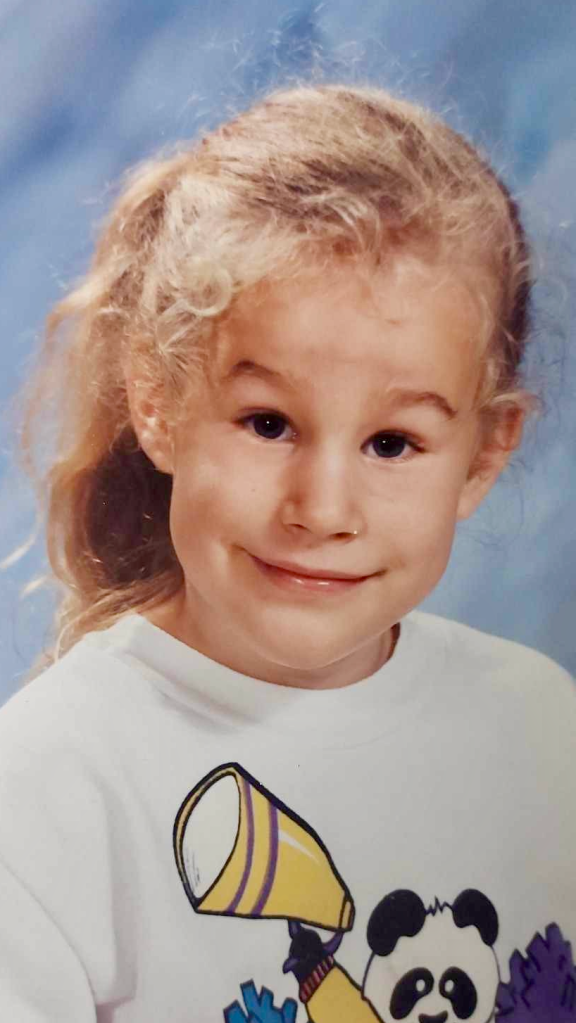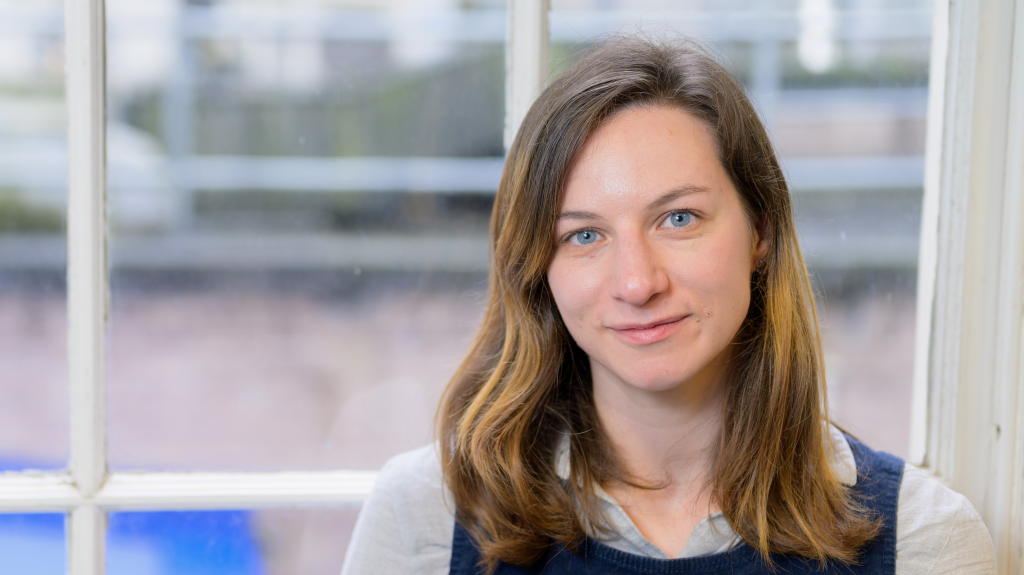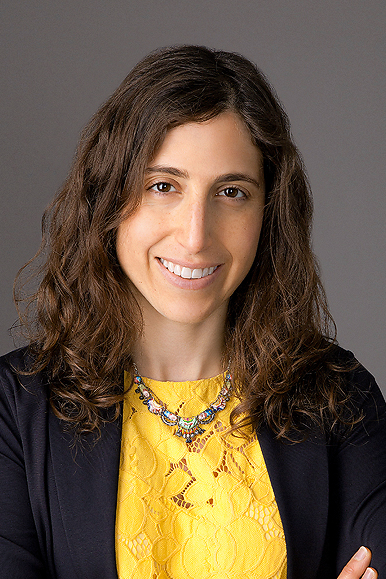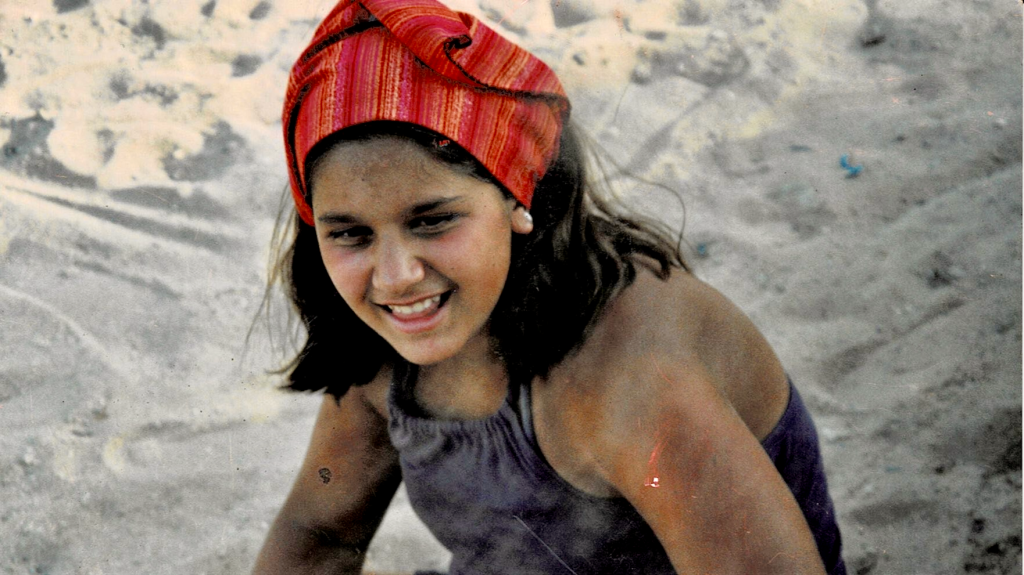Robin Emberley was 34 when she received a long-awaited answer that unravelled the cause of her constant struggle in social interactions since childhood.
She finally received an autism diagnosis in 2019 after being denied a clinical assessment twice.
“And I was just immediately just relieved like it explained so freaking much,” she said.
Like many autistic women, Emberley had always felt different but spent most of her life not knowing why.
For years, research have been showing that autistic girls and women are at risk of being overlooked, and in Canada, they are still facing multiple barriers in the diagnostic process.
The entrenched male biases in autism diagnostic tools and the lack of diagnosis support have been preventing autistic girls and women from receiving a timely diagnosis, and the impacts are devastating.
The Centers for Disease Control and Prevention (CDC) defines autism spectrum condition (ASC) as a developmental disability caused by differences in the brain, in which individuals experience restricted interests and repetitive behaviours, challenges with social communication and interaction, and sensory processing.
Autism has long been seen as a male condition.
The most widely reported male-to-female prevalence ratio for autism is either four to one or five to one.
A 2019 Canadian health survey on children and youth found males were diagnosed about four times more frequently than females.
However, recent research presents evidence of an underdiagnosis of autism in girls and women.
Researchers at the University College London reported in 2017 that autism in females could be more common than people thought, and the male-to-female prevalence was close to three to one.
The result showed a potential diagnostic gender bias exists and girls who meet the criteria for ASC are at disproportionate risk of not receiving a clinical diagnosis.
Dr. Laura Hull, a researcher at the University of Bristol whose research focuses on autism diagnosis in girls and women, was part of the research team.
“There’s definitely a kind of bias built into the system that makes it harder for girls and women to get access to diagnoses,” Hull said.
Twice denied autism assessment
Emberley was in her early 20s when she started to suspect she might be autistic after her young half-sister received an autism diagnosis.
She reached out to her family doctor for the first time to seek help in getting an assessment.
Her doctor dismissed her on the spot.
“He shut me down very quick and he’s like, I wouldn’t go looking for a label unless you’re going to go into college or university,” Emberley said.
She said her doctor’s response discouraged her from seeking an assessment, so she gave up.
As a child and a teenager, Emberley was bullied at school and sexually assaulted by a relative.
She grappled with depression for years because of the traumatic experiences in her childhood.
During her mid-twenties, Emberley was going through psychotherapy when her psychiatrist suspected she may have learning disabilities and wanted to help her apply for the Ontario Disability Support Program (ODSP).
After getting a learning disability assessment, she was diagnosed with slow processing speed and poor working memory and math computation.
Her psychiatrist then referred her to get an autism assessment.
“I was trying to get a diagnosis and to help me also get on the ODSP because my family and I, we just wanted to get answers about things about me and how things were with me,” Emberley said. But she was again dismissed by a doctor.
“After speaking to her for an hour, she says this, ‘I don’t think you’re autistic. I think you have ADHD,” Emberley said.
She said the doctor told her, “Autistic people are not creative and have no imagination. They don’t realize that they’re different from others and they are not interested in making friends.”
Her psychiatrist then referred her to a psychology clinic at Queen’s University for a second opinion.
This time, Emberley finally received a clinical diagnosis.
“She [the assessor] could just see that I was just relieved knowing, like thank you, that’s just what I wanted to hear because that just answered a lot about my childhood,” she said.

Robin Emberley said she was constantly bullied at school, and she started to experience anxiety attacks in grade six. She said years of bullying is the leading factor that led her to depression. Photo credit: Courtesy/Robin Emberley
Autism is different in girls and women
According to the fifth edition of the Diagnostic and Statistical Manual of Mental Disorders (DSM-5), to meet the diagnostic criteria for ASC, a child must have persistent deficits in social communication and interaction and have restricted repetitive behaviours.
Deficits in social skills include challenges in making eye contact, initiating or responding to social interactions, or making friends.
However, Hull said autistic girls and women are overlooked in the diagnostic process because autism could be presented differently in females.
She said the current diagnostic tools can also be biased because they were developed mostly with male samples.
“There might be some ways that women and girls express their autism that is slightly different or looks different to the ways that boys and men express their autism, which isn’t being picked up with these tools,” Hull said.
For years, research has shown autistic females have greater social motivation than their male counterparts.
Researchers at the University College London examined in 2016 the gender differences in the social motivation and friendship experiences of autistic adolescents compared to non-autistic peers.
The result showed autistic girls’ social motivation and friendship quality were similar to non-autistic girls, whereas autistic boys were reported to have less motivation for social contact and different friendship experience than non-autistic boys.
Autistic girls overall showed higher social motivation and had more intimate friendships than autistic boys.
Hull said another reason why autistic girls and women may fall under the radar is their ability to mask their autism.
Masking or camouflaging refers to a subconscious or conscious effort to suppress autistic responses to be more socially accepted. It is a survival strategy for autistic individuals to appear neurotypical by studying and imitating the behaviours of neurotypical individuals.
Hull said many autistic individuals experience pressure to fit in and look neurotypical.
“They get all of these kinds of negative messages from society that being autistic is bad,” she said.
Hull said, as a result, many develop ways to hide their autistic characteristics.
She said although autistic individuals of all genders mask their autism, anecdotal evidence suggests it is more common among girls and women. They are also able to cover up their autism more “effectively” whereas boys who hide their autism might still look autistic in other aspects of life, Hull said.

Dr. Laura Hull is a researcher at the University of Bristol whose work focuses on access to accurate autism diagnosis across genders and mental health outcomes of autistic individuals across the lifespan. Photo credit: Courtesy/Laura Hull
Dori Zener, a clinical social worker based in Toronto who specializes in autistic girls, women and non-binary persons, said autistic girls tend to mask their autism because they are very aware of societal expectations and want to fit in.
“I even have clients that I’ve worked with who will watch movies and choose characters that they want to emulate,” Zener said. “And then they’ll copy that person’s behaviours in the mirror so they can become that kind of person.”
She said autism is not always readily present at the surface among girls and women. It is more about their inner experience, including how they experience social situations, and how they perceive and interact with the world.
However, the current diagnostic criteria in DSM-5 does not fully capture the experiences of autistic girls and women.
Hull said even if autistic girls and women get through the point of getting an assessment, they may not meet the criteria in the current diagnostic tool and score high enough to be diagnosed.
Entrenched gender biases in autism research and diagnosis
Gender biases in autism studies can be traced back to the discovery of autism in the 1940s.
In the scientific research of autism, Leo Kanner and Hans Asperger were often seen as the most influential pioneer researchers.
Kanner, an Austrian American psychiatrist, whose most notable work is Autistic Disturbances of Affective Contact, published in 1943, in which he described the cases of 11 autistic children.
Asperger, an Austrian psychiatrist, published “Autistic Psychopathy” in Childhood in 1944, in which he described cases of high-functioning autistic children, later known as Asperger’s syndrome.
Although Asperger’s syndrome is no longer used as a diagnostic term and there is controversy over Asperger’s ties to the Nazis, both Kanner and Asperger’s work laid a foundation for autism research.
Both publications provided important insights at a time when little was known about autism, but they lacked the representation of girls.
In Kanner’s publication, only three girls among the 11 children were described in his case studies while Asperger’s publication in 1944, only described boys’ cases.
Since the discovery of autism, the condition has been reported as more prevalent in males.
However, a group of researchers from the University of Cambridge reviewed 329 published articles related to females, sex, gender and autism in 2014 and found most autism studies tend to include participants based on the existing four-to-one or five-to-one male-to-female ratio or even exclude females in the studies.
The multiple barriers in Canada
Zener said many women discover they might be autistic when a family member, usually a child, receives a diagnosis. There are also increasing portrayals of autism in the media, like the Korean drama Extraordinary Attorney Woo, she said.
“A lot of women I work with see themselves in that character, even in male characters that are being depicted in media,” Zener said.
Despite increasing awareness of autism, especially in girls and women, there are still multiple barriers in Canada that prevent autistic girls and women from getting a formal diagnosis, including expensive assessment costs.
There are funded programs in Canada to cover the cost of autism assessments in children and youth, but for adults, the cost is only covered under certain circumstances or insurance plans.
Most of the time, adults are paying out of their pockets, with costs ranging between $1,000 and $5,000. Zener said she heard recently of someone charging $5,500 for an assessment, a price beyond the means of many.
Even if there is a financial means to afford an assessment, the wait list can go up to a year or more with no assurance of being assessed by suitable practitioners.

Dori Zener is the director of Dori Zener & Associates, a neurodiversity-affirming mental health centre based in Toronto. She said the government needs to step up to provide support and recognize the needs of autistic girls and women. Photo credit: Courtesy/Dori Zener
Another barrier faced by autistic girls and women is the lack of trained professionals in Canada, Zener said.
“In terms of adults, there’s probably a limited number of professionals who are trained to diagnose autistic adults regardless of their gender,” she said.
She said there is a handful of professionals with specialized training in identifying autistic traits in girls.
One of the common traits in autistic girls is separation anxiety, Zener said.
“I was talking to a family and their daughter cried every single day that she was going to school,” she said. “She was 13 years old.”
However, not meeting some of the developmental milestones, like leaving a parent, are often seen as mental health issues, instead of being identified as an autistic trait, Zener said.
“Oftentimes, what happens is instead of getting an autism diagnosis, they’ll be referred for a mental health assessment and they’ll get diagnosed with anxiety, OCD, bipolar disorder, borderline personality disorder,” she said.
“There’re all these alternate labels that they’re receiving before they ever receive an autism diagnosis if they ever do,” Zener said. “Sometimes those mental health labels are still valid, but other times, it’s just as a result of not being understood as under that [autism] umbrella.”
Growing up with autism undiagnosed
Cleméntine Pirlot had to fly from Toronto to Montreal for an assessment in 2019, as the clinic had a shorter waiting list and a lower assessment fee.
Pirlot said at that time it cost about $3,000 for an adult assessment in Toronto, whereas in Montreal, it was nearly half the price at around $1,600.
It was at the age of 30 that she finally received her diagnosis. She suspected she might be autistic after reading a news article about autism in girls, Pirlot said.
“It was that freaky moment when suddenly I’m like, wait, that describes exactly me,” she said.
Pirlot said she resonated with the experiences of autistic teenage girls mentioned in the article.
“It was so hard being an undiagnosed autistic at that age when the world is basically all not made for me,” she said. “It’s kind of like the world was attacking me all the time.”
Sensory issues were one of Pirlot’s biggest struggles.
Autistic individuals often experience hypersensitivity to bright lights, certain light wavelengths, sounds, smells, textures or tastes.
Sensory overload happens when an intense sensory stimulus overwhelms an individual’s capacity to cope with it.
Pirlot said light is her biggest sensory issue, especially with artificial light.
In a school environment filled with fluorescent lights, she was always in fight or flight mode, she said.
“I would either be super on edge or completely shut down like I had no energy left,” Pirlot said.
She was often labelled as a lazy and difficult child for sleeping during class or staying on the couch for hours after school to recharge.
“If I could have known, I would’ve adapted, which I do now,” she said.

Cleméntine Pirlot (right) and her sister (left) as children. She said judging by her facial expression in the photo, she might be experiencing some sensory issues. Photo credit: Courtesy/Cleméntine Pirlot
Pirlot said she struggled with interpersonal relationships during her teenage years. She was bullied by her peers and constantly got into trouble for saying things considered inappropriate.
“I was staying around people, but I was never really accepted,” Pirlot said. “I think self-esteem goes down every time you’re rejected, which happens a lot.”
She said people can sense that she was different, but nobody knows why.
“With or without a diagnosis, you’ll be bullied anyway because you’re different and people sense it,” Pirlot said.
She said through feedback from people, she learned to speak in a socially acceptable manner under different circumstances.
Pirlot referred to masking as a trial-and-error process.
“It’s kind of like your computer program and every time you’re rejected, every time you are grounded for something, it’s an input you add,” she said.
However, masking comes with a price.
Pirlot said she lost her sense of self having to mask her autism and pretend to be someone else.
“Who I am doesn’t seem to work anywhere, anytime so let’s be something else,” she said. “When you arrive [adulthood] and then you’re an adult, and you’re like, I don’t know who I am, really.”
Pirlot said it was a huge conscious effort to look good and adapt socially, but at some point, the mask could come crumbling down, resulting in a meltdown.
Devastating impact of delayed diagnosis
Zener said a delayed diagnosis is highly damaging to an autistic person’s sense of self because they go through life knowing they are different and feeling like they are not good enough, but not knowing why and having the tools to help them navigate the world.
She said the cumulative load to conform pushes many girls and women to autistic burnout, which is at that stage they would then receive a diagnosis.
Researchers in Oregon conducted community-based participatory research in 2020 to understand and characterize autistic burnout. They identified three key characteristics of autistic burnout, which are chronic exhaustion, reduced tolerance to stimulus and loss of skills.
Participants reported experiencing exhaustion of internal resources, encompassing physical, mental, emotional and social aspects during an autistic burnout.
They also become more sensitive to environmental stimuli and less able to regulate themselves, resulting in increased overstimulation, meltdowns and shutdowns.
There is also a loss of diverse skills, including their ability to think, remember, create, execute plans, socialize, regulate emotions or perform everyday tasks.
At times, those skills might not recover to their baseline level afterward.
Participants reported autistic burnout has negative impacts on their physical and mental health, quality of life, and capacity for independent living.
In the study, a participant said, “[The burnout] made me feel worthless because I went from being a functional member of society to somebody who wasn’t working.”
Multiple participants said their burnout experience led to self-injury, suicidal thoughts, or even suicide attempts.
Hull said many girls and women tend to receive an autism diagnosis only when they have reached a mental health crisis.
“Having undiagnosed autism and not getting the support that they need leads to more mental health difficulties,” she said. “But obviously you can’t really treat the mental health condition effectively until you understand the underlying autism that’s causing it.”
Hull said undiagnosed autism also puts girls and women at higher risk of sexual assault or intimate partner violence because of their difficulties in understanding social relationships.
Researchers at the Karolinska Institute in Sweden conducted a study on 4,500 Swedish twins in 2018 which show autistic girls were three times more likely to experience childhood sexual abuse than their neurotypical counterparts.
Hull said one autistic woman she talked to said before her diagnosis, she was taken advantage of as a teenager because she did not understand what boys meant when they asked her to do certain things.
“Looking back, she now realizes why other people didn’t warn her because they just assumed that she did understand that,” she said. “Therefore, they thought she was choosing to go along with what they were suggesting, and she wanted it, but she didn’t have the awareness or the ability to say, ‘that’s not what I want’, because she thought that was what everyone had to do.”
Hull said if they get a diagnosis earlier on, they could be informed of the potential risk they might face.
Life after diagnosis
Pirlot, now 34, is a software engineer in Kelowna, B.C.
With the diagnosis, she learns to adapt and change her environment to reduce sensory issues, meltdowns, shutdowns and burnouts, she said.
Pirlot said before the diagnosis, she could only hold a job for a maximum of six months, and now, she has been in a job for a year and a half.
“To most people, it wouldn’t be [huge], but to me, staying a year and a half somewhere is just glorious,” she said.

Cleméntine Pirlot now wears tinted glasses to reduce light sensory issues and works remotely at home as a software engineer. Photo credit: Courtesy/Cleméntine Pirlot
Pirlot said after the diagnosis, her family also learned to support her needs.
She said her father now understands what troubles her with the lights and creates a safe environment for her.
“He can kind of adapt everything for me, even before I have to do it or ask,” Pirlot said. “He would turn off the lights and bring a small lamp or things like that, and it just means so much to me.”
She said being diagnosed also brings support from the autistic community. Through joining online communities and support groups, she can share everything she is feeling, Pirlot said.
“Someone will say something, and you feel so seen and understood,” she said.
Support from the community is only possible if an autistic individual has a diagnosis and is aware of seeking it, Pirlot said.
She is now an autism advocate who facilitates a monthly support group for autistic women and non-binary individuals.
Emberley, now 38, is a single mother of a 10-year-old daughter.
She said with a diagnosis, she can now tell people upfront that she is autistic.
“It’s like now I can just tell people I’m autistic,” Emberley said. “I’m going to rub you the wrong way sometimes and my social skills aren’t up to par.
“If I rub you the wrong way, please just tell me.”

Robin Emberley said even after her diagnosis, people do not always believe she is autistic because she does not fit the typical autism stereotype portrayed in media. Photo credit: Courtesy/Robin Emberley
Her daughter who is also autistic was diagnosed at the age of three, she said.
“She’s lucky. She has support that she needs, and she has a couple of good friends,” Emberley said.
When her daughter gets bullied, she tries to help her peers understand her daughter’s condition, she said.
“If I see their parents, I try to tell them too, which helps her because I wish I had that sort of support when I was growing up,” Emberley said.
She said she enrolled her daughter in a program that helps build her social skills.
“I worry about it all the damn time and I know she has to learn,” Emberley said. “And sometimes you just have to learn the hard way, which is going to be the sad truth, but all I can do is just be like watch out and just keep an eye out.”
She said after the diagnosis, she has more feelings of self-worth compared to her younger self.
“I wish it was such thing as a time machine,” Emberley said. “I wish I could go back and just tell myself things that I know now, just to give myself that sense of relief.”
“I’d be like, you know what, you definitely have a lot more to you than what others are letting on,” she said.
Emberley said she hopes people will not judge autistic individuals and learn to accept them.
Autistic individuals may seem strange, but they have a lot to give, including friendships, she said.
“We just want to be accepted and that’s all that we want to be,” Emberley said.
Sources
Publications:
What Is the Male-to-Female Ratio in Autism Spectrum Disorder? A Systematic Review and Meta-Analysis
https://www.jaacap.org/article/S0890-8567(17)30152-1/fulltext#%20
Gender Differences in the Social Motivation and Friendship Experiences of Autistic and Non-autistic Adolescents
https://www.ncbi.nlm.nih.gov/pmc/articles/PMC4786616/
Journey to diagnosis for women with autism
https://dorizener.com/wp-content/uploads/2019/03/Journey-to-diagnosis-for-women-with-autism-Publication.pdf
Autistic Disturbances of Affective Contact
https://autismtruths.org/pdf/Autistic%20Disturbances%20of%20Affective%20Contact%20-%20Leo%20Kanner.pdf
‘Autistic psychopathy’ in childhood
https://www.cambridge.org/core/books/abs/autism-and-asperger-syndrome/autistic-psychopathy-in-childhood/C8439B5AC1215CE53946943845E2FD3F
Sex/Gender Differences and Autism: Setting the Scene for Future Research
https://www.ncbi.nlm.nih.gov/pmc/articles/PMC4284309/
“Having All of Your Internal Resources Exhausted Beyond Measure and Being Left with No Clean-Up Crew”: Defining Autistic Burnout
https://www.ncbi.nlm.nih.gov/pmc/articles/PMC7313636/
Childhood neurodevelopmental disorders and risk of coercive sexual victimization in childhood and adolescence – a population-based prospective twin study
https://acamh.onlinelibrary.wiley.com/doi/10.1111/jcpp.12884
Websites:
Autism spectrum disorder: Highlights from the 2019 Canadian health survey on children and youth
https://www.canada.ca/en/public-health/services/publications/diseases-conditions/autism-spectrum-disorder-canadian-health-survey-children-youth-2019.html
Ontario Disability Support Program
https://www.ontario.ca/page/ontario-disability-support-program
Signs and Symptoms of Autism Spectrum Disorder
https://www.cdc.gov/ncbddd/autism/signs.html
CDC – Autism Diagnostic Criteria
https://www.cdc.gov/ncbddd/autism/hcp-dsm.html
The Autism History Project
https://blogs.uoregon.edu/autismhistoryproject/
Autism Speaks – Sensory Issues
https://www.autismspeaks.org/sensory-issues#:~:text=Many%20autistic%20people%20experience%20hypersensitivity,people%20can%20easily%20tune%20out.
Autism Ontario – Adult Diagnosis
https://www.autismontario.com/programs-services/adults/adult-diagnosis
